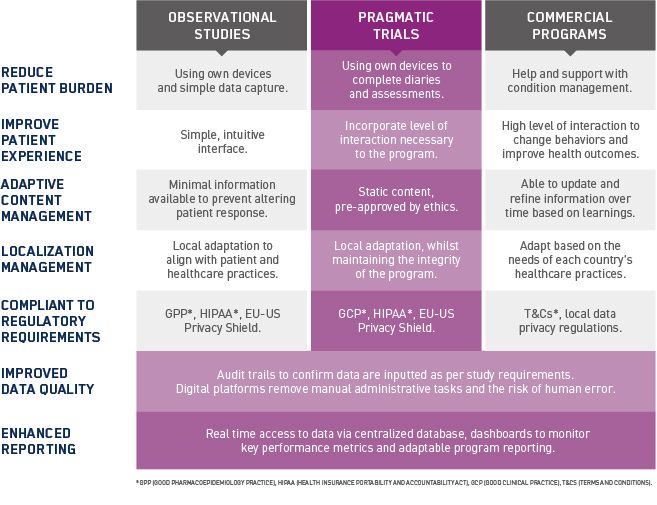Generating a Rich Source of Real-World Data Through Pragmatic Trials
In this three-part blog series, we look at how electronic platforms can support and enhance data capture in several types of RWD programs: observational studies, pragmatic trials, and commercial programs.
A primary focus of the healthcare industry is to generate Real-World Evidence (RWE) to better inform decision making. A key source of RWE comes from patients reporting on their own health outcomes as they participate in Real-World Data (RWD) programs, including observational studies, pragmatic trials, and commercial programs.
In the first of this three-part blog series, we explored how RWD generated by observational studies can be harnessed effectively. Here we look at pragmatic trials-which have recently re-emerged to generate valuable RWD-and assess how technological solutions are ideally placed to support RWD capture in this setting.
What are pragmatic trials?
Pragmatic trials are gaining momentum in post-marketing research as they are still interventionalâyet carried out in real-world settings. Designed to evaluate the effectiveness of treatment interventions in routine general practice, pragmatic trials provide data that can be generalized and applied in real-world settings. As such, they are an increasingly valuable source of RWD.
What role does technology play in pragmatic trials?
In this digital age, patients have expectations for digital tools to be intuitive and user friendly, like those they can download and use in their everyday lives. Electronic data capture methods can support pragmatic trials through enabling patients to use their own devices, known as a ‘Bring Your Own Device’ (BYOD) approach. Digital platform solutions allow sponsors to easily collect patient reported outcomes and health-related quality of life assessments in real-time, in a regulatory compliant manner.
What benefits can technology offer?
Patients benefit from the ease-of-use of a BYOD approach in pragmatic trials. They can also access a broad range of engaging and motivational digital content to further improve their experiences. For example, they can view videos about their condition, ask questions through scripted chat-bots, and even integrate other personal devices, such as activity monitors, into the data capture platform if appropriate.
Depending on the requirements of the sponsor, some or all of these capabilities can be implemented using the digital platform. The flexibility of a digital platform means they can be adapted to meet the specific needs of each trial, allowing study teams to balance internal validity versus real-world effectiveness. Electronic capture solutions help to ensure the collection of high quality RWD supported by a full audit trail to aid future regulatory approval processes.
Conclusion
BYOD in pragmatic trials is highlighting the importance of digital capture technology in post-approval research. Sponsors can now assess the effectiveness of a treatment in an environment that can be generalized and applied to real-world settings, while operating in a regulatory compliant manner that does not increase burden on patients or compromise the quality of the data.
Look out for the third blog in this series ‘Utilizing Real-World Data Captured during Commercial Programs’ next week!

Tim Davis, VP, Digital Patient, ERT
The Importance of Real-World Evidence in Medical Research and Drug Development
February 18th 2025The ongoing evolution of real-world evidence from a novel concept to a cornerstone of modern medical research signifies its growing importance and vast potential to improve personalized medicine, overall healthcare outcomes, and eventually democratization of scientific facts by general accessibility.